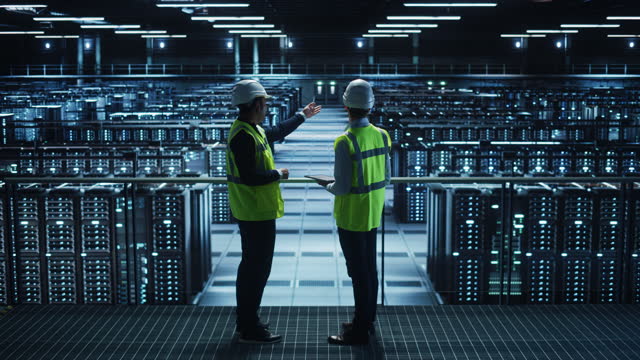
Reality capture is becoming a vital part of any construction project. Construction cameras in particular are now being used to gather data on new projects and existing buildings. They’re also used for building inspections, surveys structural engineering and design.
This is because cameras help with both indoor and outdoor projects. When used properly, construction cameras can help with almost any task related to construction.
Data centre construction refers to the process of physically constructing a data centre facility. It combines data centre operational environment requirements with construction standards.
Data centre design and construction processes took an average of 18-24 months just a decade ago. While standardised designs and advances in capacity planning strategies have aided data centre developers in bringing new facilities online in 12-18 months, future operators and customers can expect move-in-ready facilities in as little as six months.
The data centre industry’s continued rapid growth — at least 6% increased spending in 2021 and hundreds of new projects in the pipeline — has only heightened the focus on and expectations of how quickly new facilities can be brought online.
As a result, data centre developers are increasingly looking for new ways to build larger and more powerful data centres faster and at a lower overall cost. Adopting technological tools to make construction more agile is no longer an option. It is now a necessity if the data centre industry is to keep up with the global cloud computing boom.
The rise of cloud computing, artificial intelligence, and machine learning to support data centre operations means fewer mundane tasks and more time and energy for high-level issues.
In a bid to ensure that clients’ network and compute infrastructure is securely hosted, quickly accessible and available 24/7, construction cameras are an essential tool for data centre projects since the entire construction project is recorded in full video

As technology companies use AI to create smarter apps and services, the adoption of artificial intelligence is a major factor in the growth of the data centre business. AI can also enhance tools for managing construction.
Cameras strategically placed around a job site monitor everything that happens, from progress to potential safety hazards. Installing a construction camera on your job site is an investment that will help you to see the bigger picture.
One can keep tabs on your projects from afar and manage multiple projects with ease. A professional monitoring service will help make sure everything goes according to plan and without any hiccups – which means less time wasted on visits or lost opportunities for success!
While there is a need to deliver data centre projects within a short period of time, the standard of health and safety adherence cannot be compromised. With construction cameras on-site, project managers are able to check for potential safety issues, log and review near misses, and quickly report any accidents on site. Overall construction cameras are being used daily to monitor safety, productivity, and quality.
Artificially intelligent construction cameras allow users to actively monitor site activity, track project progress and view detailed reports. Construction cameras continuously scan the job site and alert the team with only relevant information, rather than tying up a human worker to monitor everything.
Construction cameras can have features that monitor all entry points into the data centres which feature the intelligence to send an alert to the project team whenever needed.
The cameras can detect different types of vehicles, record their individual license plates, monitor the duration of the time a vehicle spent on site and provide an in-app & PDF report on the same. Evercam’s feature designed for this purpose, The Gate Report provides a digital report that supports internal and manual reports conducted by project teams.
Data centre construction primarily focuses on designing and constructing a data centre using the following key factors;
Capacity: the data centre floorplan must have enough room to accommodate all servers and equipment for current and anticipated future use.
Disaster Tolerant: Data centre facility must be able to withstand natural disasters and calamities such as earthquakes, floods, snowstorms, and other natural disasters. Furthermore, the data centre construction considers ways to prevent disasters, such as having enough water tanks and hoses within the facility to put out a fire.
Efficient Design:The overall design should be simple and require little wiring. The transition to green data centres takes into account efficient airflow, renewable energy resources, and other environmental factors.
Construction cameras play a key role in ensuring that the above factors are adequately considered. With a construction camera that allows you to overlay your BIM model with real-time, high-resolution images of your project, the project team is able to compare the project as built with the BIM model at any point in time hence being able to track progress and quality. The BIM integration bridges the gap between what is designed at the office and what is built on-site.
Data centres are complex structures that require a deep understanding of what’s needed to make them work. While the expectation of the client is to build more efficient data centres, faster and more cheaply, the reality is that critical processes – design, site selection and setting up a multidisciplinary team to execute the project – can take considerable time.
To successfully come up with a fully functional and operational data centre, all project stakeholders need to consider the essence of artificially intelligent construction cameras. This not only helps in tracking the progress of the project but also realises effective management, time and cost saving.
If you want to know how Evercam can help you, contact us today!